.webp)

Introduction
In the world of fine wine, particularly with vintage bottles, pricing trends fluctuate based on availability, rarity, and demand. Platforms like Wine-Searcher aggregate extensive pricing data from sellers worldwide, making it a valuable resource for collectors, investors, and enthusiasts who wish to monitor vintage wine prices. However, manually extracting data on vintage wines can be both time-consuming and limited. This guide explores how Web Scraping Vintage Wines Prices from Wine-Searcher can provide real-time insights into pricing trends and availability. We’ll cover the essential processes, key tools, and best practices to extract valuable wine data reliably and efficiently.
Why Scrape Wine-searcher for Vintage Wine Prices?
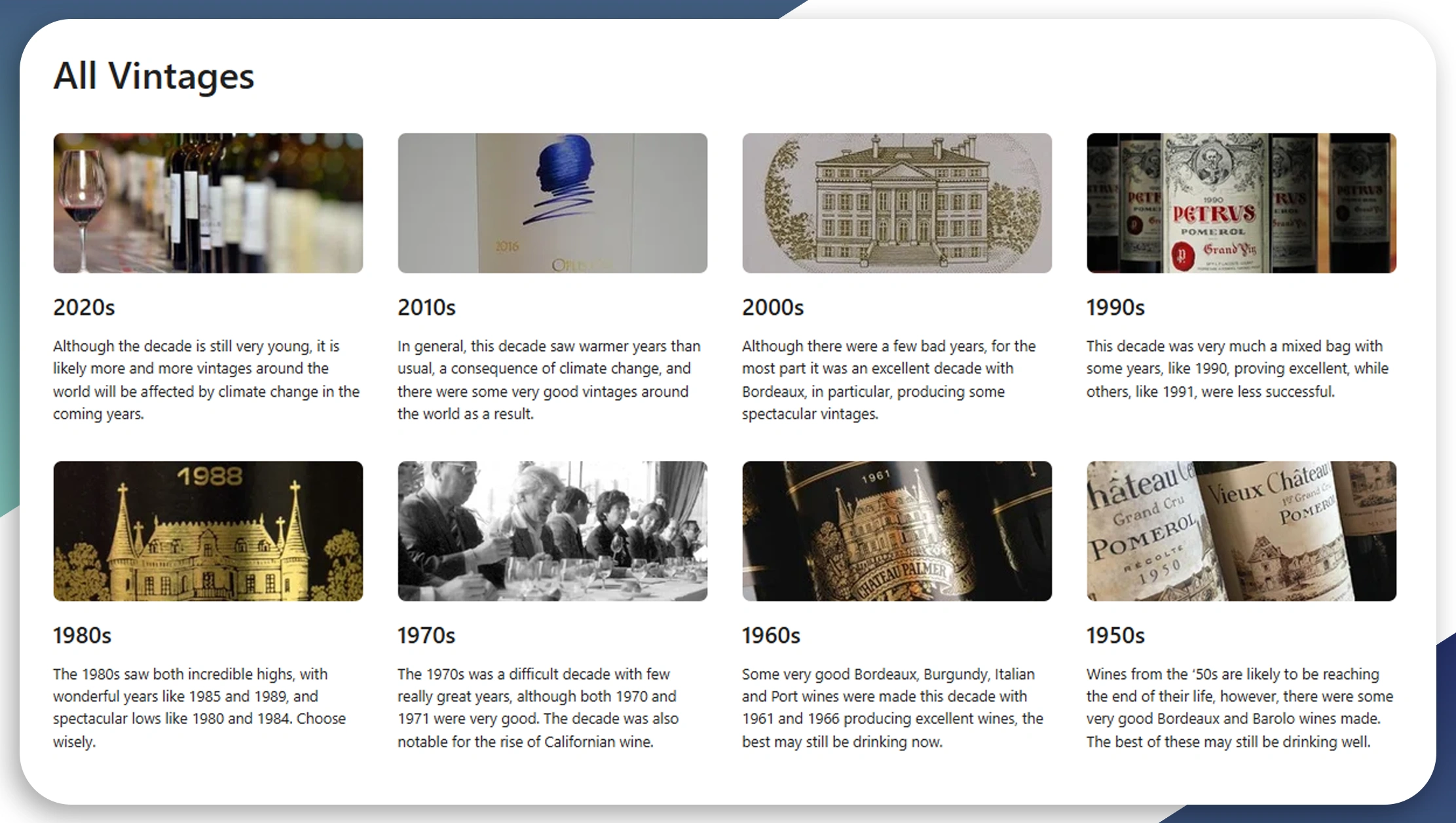
Wine-searcher offers extensive listings of wines from around the globe, with pricing, sellers, vintage details, and more. This data can serve as a goldmine for those interested in tracking Wine-searcher vintage wine price scraping data, enabling wine collectors to make informed purchase decisions and investors to track the financial potential of rare bottles.
Pricing Comparisons: Using Vintage wine price comparison scraping from Wine-searcher, users can compare prices across sellers to identify the best deals.
Historical Price Analysis: By Extracting historical wine prices from Wine-searcher, investors can identify price patterns and predict potential future values.
Market Trends and Insights: Data from Scraping Wine-searcher for vintage wine price trends helps enthusiasts spot changes in market demand, providing insights on popular regions, vintages, or specific wineries.
Key Data Points for Wine-searcher Vintage Wine Data Scraping
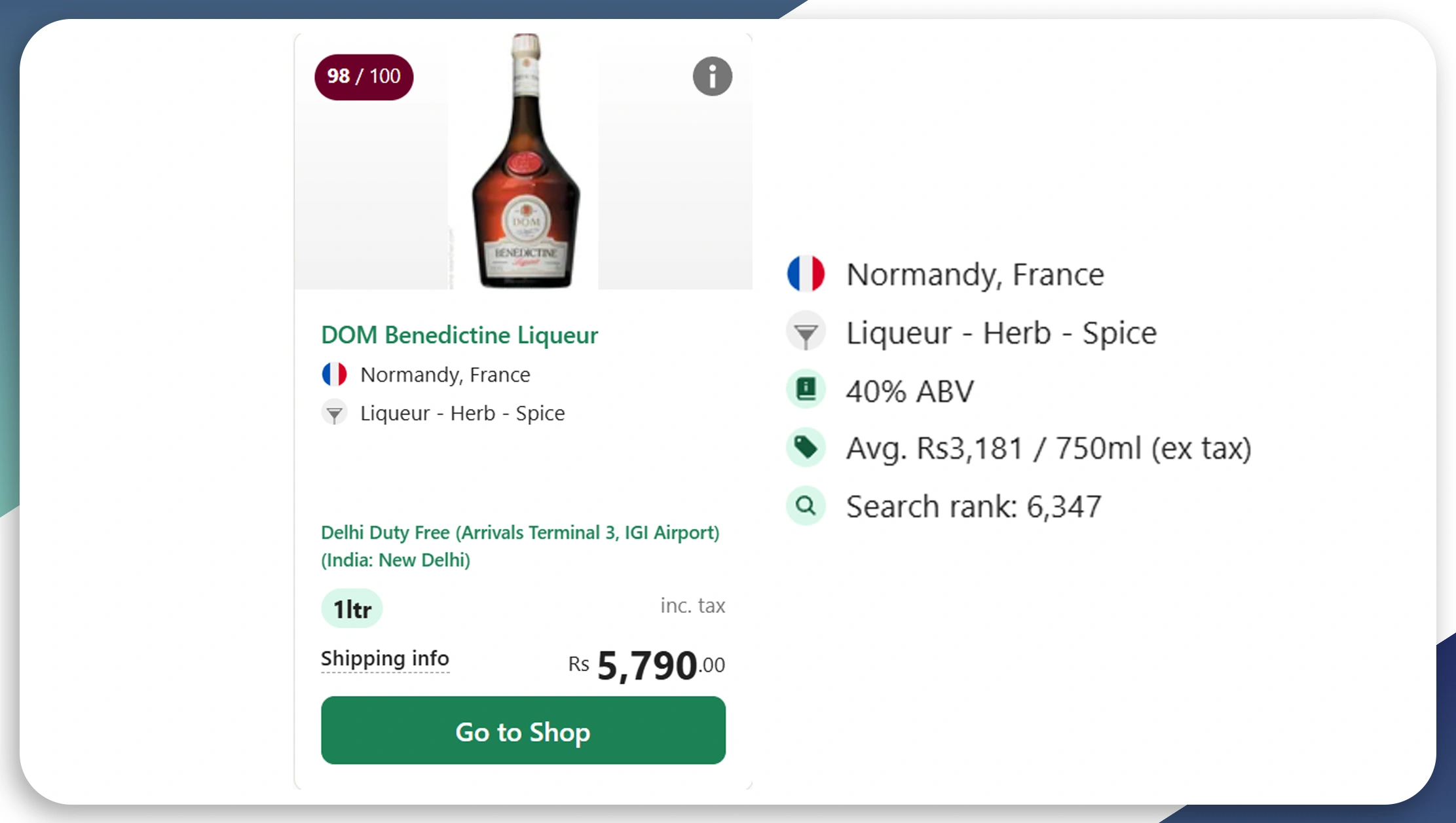
When performing Wine-searcher price data extraction, it’s important to focus on several essential data points that offer the most value for analysis. Some critical data points include:
Wine Name: The exact name and vintage year are necessary for precise tracking and comparison.
Price: Real-time price data offers insights into current market value.
Seller Information: Helps identify reliable sellers and track location-based pricing trends.
Vintage Year: Essential for vintage wines as each year may reflect unique characteristics and value.
Wine Region and Producer: Helps differentiate wines based on geography and reputation.
Step-by-Step Guide to Web Scraping Vintage Wines Prices from Wine-searcher

Define Your Objectives: Identify the goal of your Web Scraping Vintage Wines Prices from Wine-searcher process. Are you aiming to compare current prices, analyze historical data, or observe pricing trends for investment?
Choose a Web Scraping Tool: Many tools can aid in Wine-searcher wine price scraping. Popular options include BeautifulSoup for Python, Scrapy, or browser automation tools like Selenium, which can handle dynamic content.
Identify and Inspect Target URLs: Each vintage wine listing on Wine-searcher may have a unique URL. To streamline the scraping process, examine the URLs for consistency to simplify data extraction.
Access Data Fields with HTML Tags: Inspect the webpage to locate the HTML tags corresponding to your target data fields (e.g., wine name, price, seller). Tools like Chrome Developer Tools can assist in inspecting and pinpointing relevant tags and classes.
Extract Data with Web Scraping Code: Write a script to access and pull data from the Wine-searcher pages. Here’s a simple example in Python using BeautifulSoup:
Store and Analyze Data: Save your scraped data in a structured format, such as CSV or a database, to allow for easy analysis. Use data analysis tools or software like Excel or Tableau to visualize price trends and perform comparisons.
Best Practices for Vintage Wine Price Extraction from Wine-Searcher

When conducting Vintage wine price extraction from Wine-searcher, adhering to best practices ensures efficiency and ethical data handling:
Respect Rate Limits: Excessive requests to Wine-searcher’s website may lead to temporary bans or IP blocks. Consider implementing delays between requests to reduce server strain.
Rotate Proxies: When scaling up, use proxies to distribute your requests across multiple IPs, reducing the risk of detection.
Set a User-Agent: Use a unique User-Agent header to avoid detection. Most websites block requests without a User-Agent.
Monitor for Changes: Wine-searcher may periodically change its website structure, which could affect your scraping script. Regularly inspect the website to keep your scraping script up to date.
Key Use Cases of Web Scraping Wine-searcher Vintage Wine Pricing
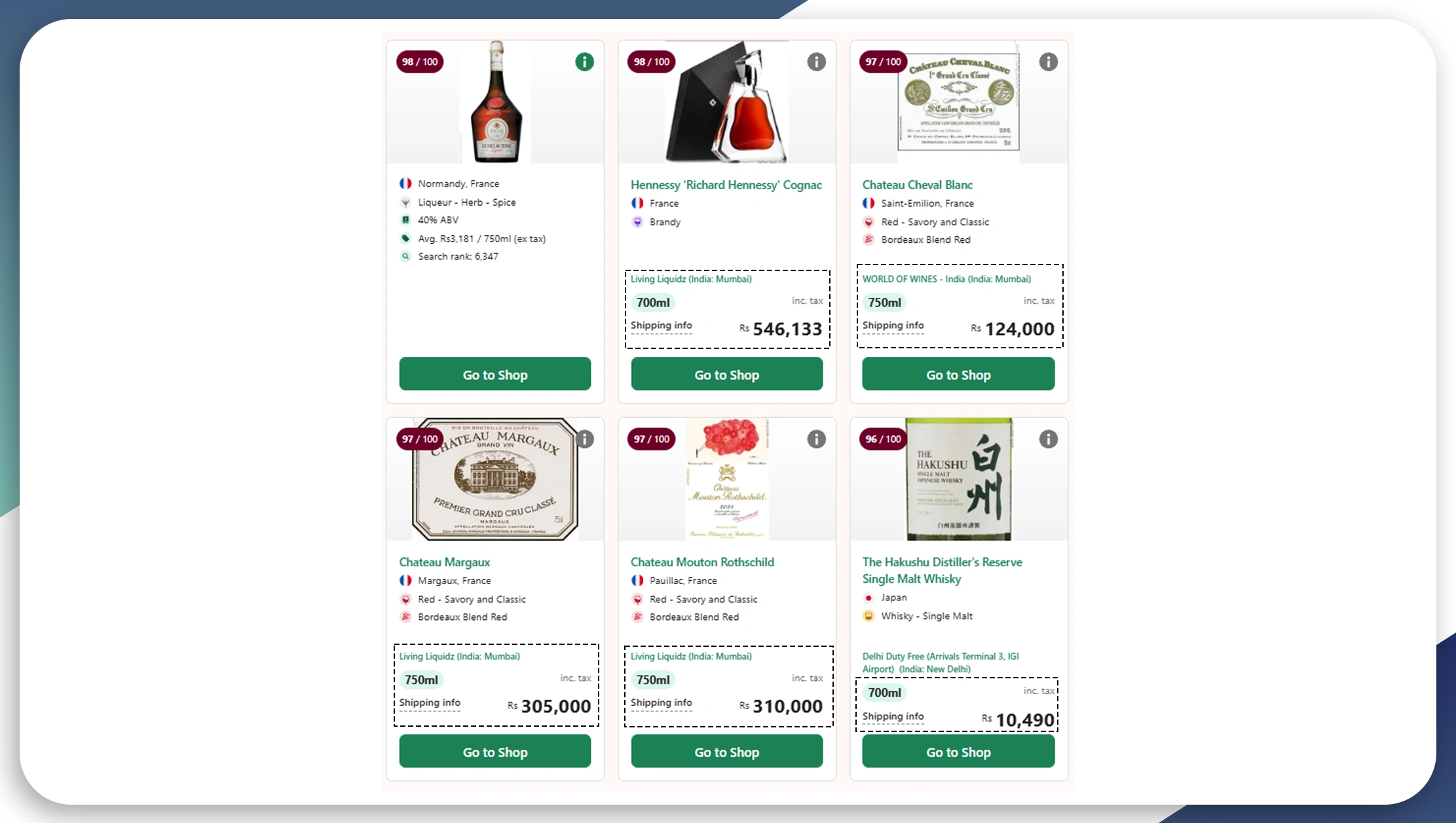
1. Investment Tracking for Vintage Wines
Wine investors rely on historical pricing data to make informed decisions. By Extracting historical wine prices from Wine-searcher, investors can analyze past trends and anticipate potential growth, helping them make well-timed investments in valuable vintages.
2. Competitive Analysis for Wine Retailers
Retailers use Wine-searcher vintage wine price scraping to understand competitors’ pricing strategies. Extracting data from both popular and emerging sellers provides insights into price fluctuations and optimal times for promotions or pricing adjustments.
3. Price Comparison for Collectors
Collectors often use Scrape vintage wine prices on Wine-searcher for price comparison. They can leverage this data to find the best deals, monitor availability, and maintain an accurate record of their collection’s value over time.
Challenges in Web Scraping Wine-searcher for Vintage Wine Listings

While Wine-searcher vintage wine data scraping offers valuable insights, some challenges can arise:
Dynamic Content Loading: Wine-searcher may use JavaScript to load some of its content. In this case, Selenium or another browser automation tool can help load the page before scraping.
Data Variability: Pricing and availability fluctuate frequently, requiring regular scraping for accurate insights.
Legal Considerations: Always check Wine-searcher’s Terms of Service before scraping. Some sites restrict data extraction, and respecting these policies is essential.
Using Real Data API for Wine-searcher Vintage Wine Price Trends
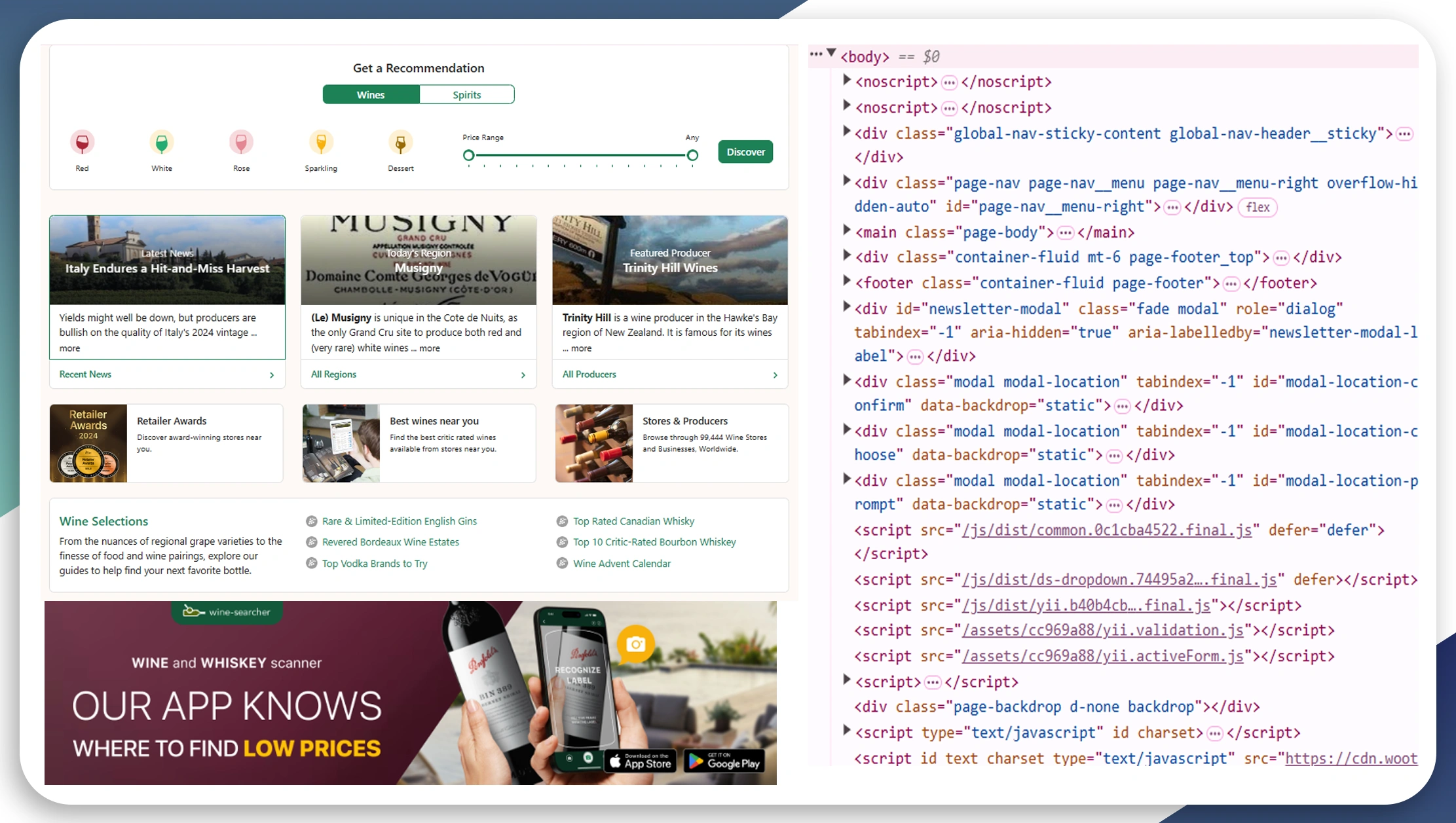
Real Data APIs can streamline the process of Scraping Wine-searcher for vintage wine price trends by offering real-time data on wine prices and availability. APIs provide structured data directly, eliminating the need for extensive web scraping and enhancing data accuracy and reliability.
Real-Time Data Access: APIs fetch data instantly from Wine-Searcher, reducing the risk of outdated information.
Scalable Data Extraction: Real Data APIs support high-volume data extraction, making it easier for businesses to track numerous wines simultaneously.
Comprehensive Data Retrieval: Real Data APIs cover essential wine data points, including prices, seller locations, and vintage details.
Analyzing Scraped Vintage Wine Data: Insights and Trends
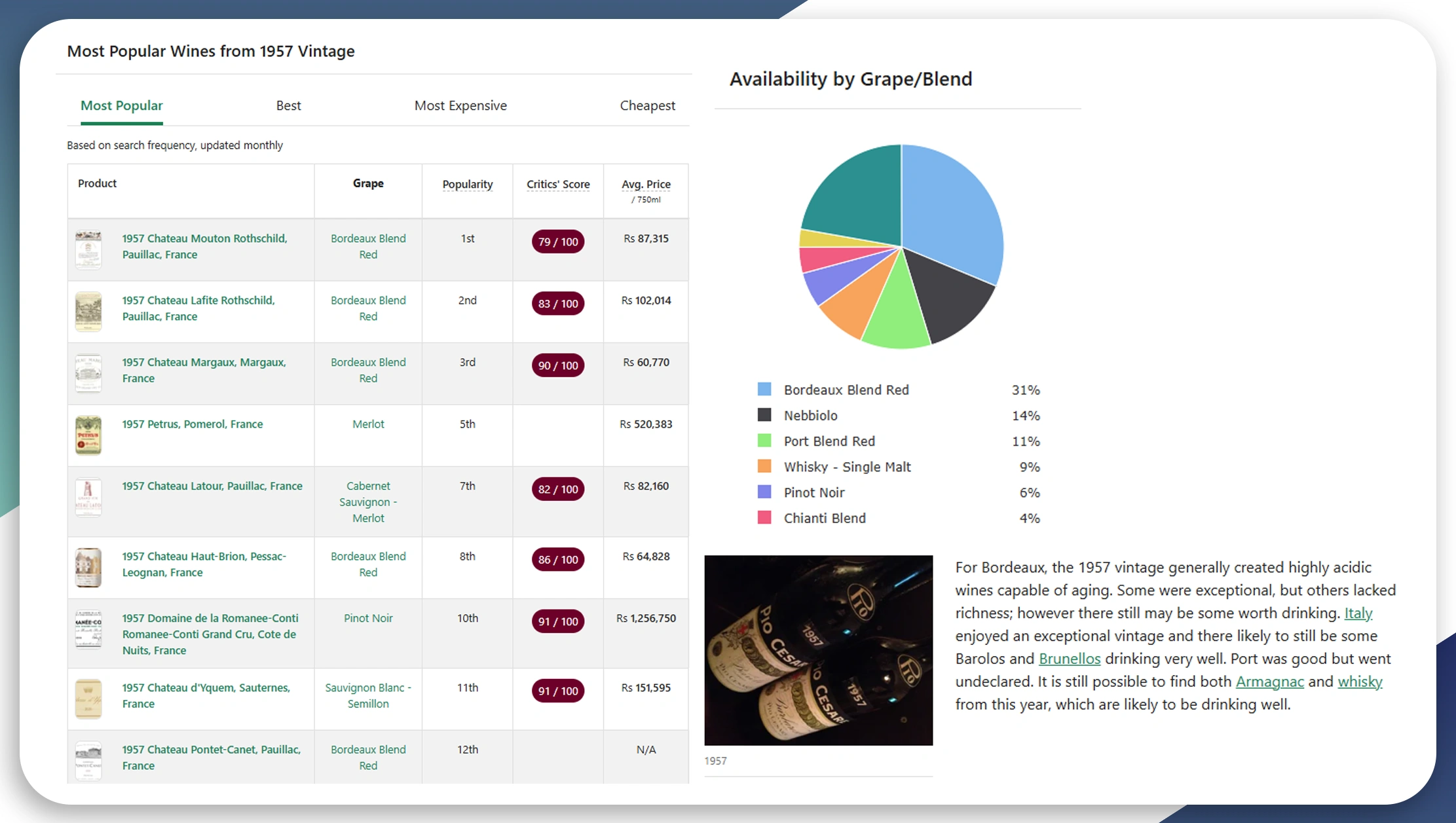
Once data is collected, a thorough analysis reveals trends and pricing dynamics that can help collectors, retailers, and investors make better decisions.
1. Price Trends and Forecasting
Analyzing Extracted vintage wine prices using Wine-searcher can reveal patterns over time. Some wine varieties and regions appreciate faster than others, providing investment opportunities for certain vintages.
2. Identifying Rare Deals
Using Scrape Wine-searcher for vintage wine deals data allows collectors to spot rare, discounted bottles. Monitoring such trends reveals the best times to buy, helping collectors maximize their purchasing power.
3. Comparing Regional Price Variations
Wine prices can vary significantly by location due to import fees, shipping costs, and demand. Extracting vintage wine data from Wine-Searcher enables a comparative study across regions, helping businesses adjust their strategies for various markets.
Sample Code for Extracting Vintage Wine Data from Wine-Searcher

For those interested in trying a Wine-searcher wine price scraping project, here’s a more comprehensive sample using Python and BeautifulSoup:
Conclusion
By leveraging Web Scraping Vintage Wines Prices from Wine-searcher, wine collectors, investors, and retailers can gain valuable insights into pricing trends, market demand, and seller comparisons. The process of Scrape vintage wine prices on Wine-searcher and Wine-searcher vintage wine price scraping can be challenging, but with the right tools, best practices, and a strong focus on data ethics, businesses, and individuals can make the most of these insights to inform purchasing and investment decisions.
For those looking to streamline their data extraction process and ensure real-time accuracy, consider using Real Data API. This powerful tool offers structured access to pricing data, allowing you to focus on analysis rather than data collection. Start harnessing the power of real-time data today to enhance your wine investment strategies! Contact us for more details!













